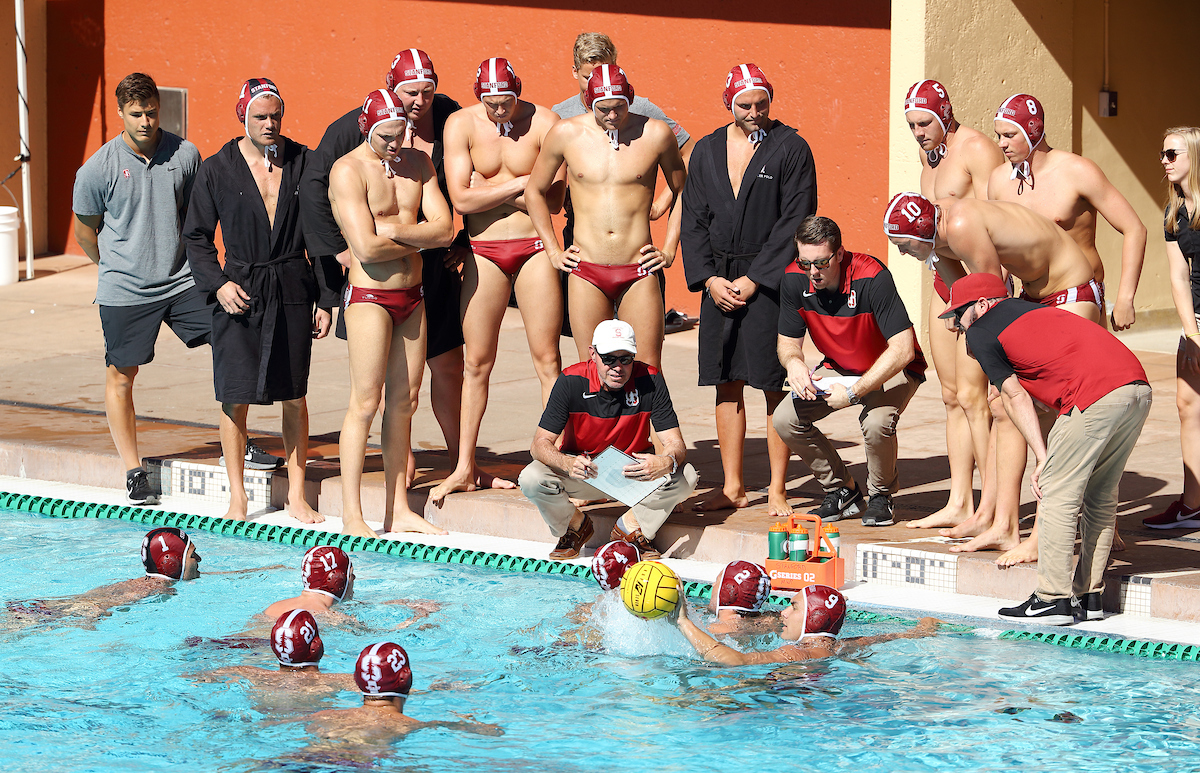Last time the Cardinal graced the waters of Avery Aquatic Center, they had fallen just short of a miraculous comeback against their most embittered rival in the biggest game of the season.
In 2019, the Stanford men’s water polo team looks to reverse its fortunes and snap a 16-year championship drought, the longest in the program’s history.
After a 14-12 defeat at the hands of USC in last year’s NCAA Championship, Stanford graduated Blake Parrish ’19, Marco Stanchi ’19 and Oliver Lewis ’19. Parrish was the team’s fourth-leading goalscorer in 2018, hitting the target 42 times, while Stanchi chipped in another 13, good for eighth on the team.
Lewis, the goalkeeper, made 251 saves in just under 23 games, good for an average of 11 saves per game. The premier shot-stopper will be replaced by senior Andrew Chun and sophomore George Hagestad.
Though the Cardinal suffered key losses in Parrish and Lewis, last year’s No. 1 nationally ranked team returns its top three offensive players, junior Ben Hallock, senior Bennett Williams and junior Tyler Abramson, who together accounted for 53% of Stanford’s goals in 2018.
The trio of playmakers will provide the 2018 Mountain Pacific Sports Federation (MPSF) winners with ample firepower heading into the 2019 season, so the Cardinal should not expect to see a dip in production.
Hallock, an Olympian for the USA national team in 2016 and the reigning Peter J. Cutino Award winner — the honor recognizing the most outstanding men’s water polo player in the country — gives the Cardinal a consistent threat from the middle of the pool at his 2M position. He scored in 21 of 23 games he played in last season and finished second in the MPSF with 2.83 goals per game.
Hallock is often double-teamed, which is either inconsequential because of his raw ability or allows others like Williams and Abramson to score from outside. What’s more: Hallock only appears to be getting better. After scoring 56 goals as a freshman in his debut season with the Cardinal, Hallock put 65 shots past opposing goalkeepers in his sophomore year and looks ready to make another big leap in 2019.
Meanwhile, Williams and Abramson give Stanford strong number two and three options and will be critical for the Cardinal to make another long postseason run.
Likely rounding out the starting lineup for Stanford are sophomore Jack Seybold and junior Dylan Woodhead, while the seventh spot is up for grabs. The Cardinal roster will also be bolstered by the addition of three sophomores — who redshirted as freshmen — and five newcomers, all California standouts in their high school careers.
As far as the team’s schedule goes, head coach John Vargas will look to rack up wins against lesser competition in September and October before navigating a difficult stretch in November in which the team plays consecutive games against the three other members of the collegiate water polo “Big Four”: USC, UCLA and Cal.
Stanford’s pre-Thanksgiving matchups against the Big Four will likely not be the first time the team see its MPSF rivals, as the Cardinal will also have opportunities to measure up against their biggest competition in September at the Stanford Invitational and Mountain Pacific Invitational.
Vargas’ initial focus will be on putting together a strong regular season and securing a spot in the NCAA Championship, but the 2019 Stanford season will be judged on the Cardinal’s playoff success regardless of its regular season record.
The Trojans again figure to be Stanford’s stiffest competitors for the national title; USC did not graduate anyone of note and will return the core of its championship team. Still, Cardinal fans should be excited to see the latest installment of the Stanford-USC rivalry as the team from the Farm has a very real chance at hoisting the big prize by season’s end.
Contact Andrew Tan at tandrew ‘at’ stanford.edu.
